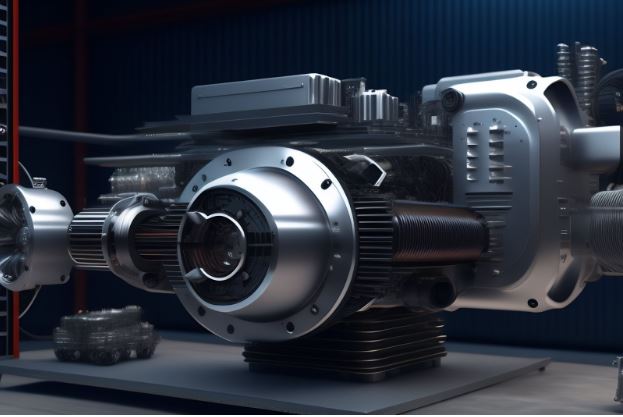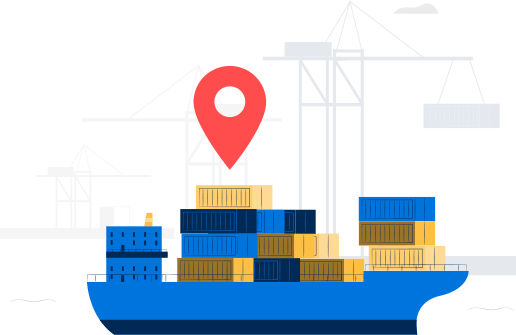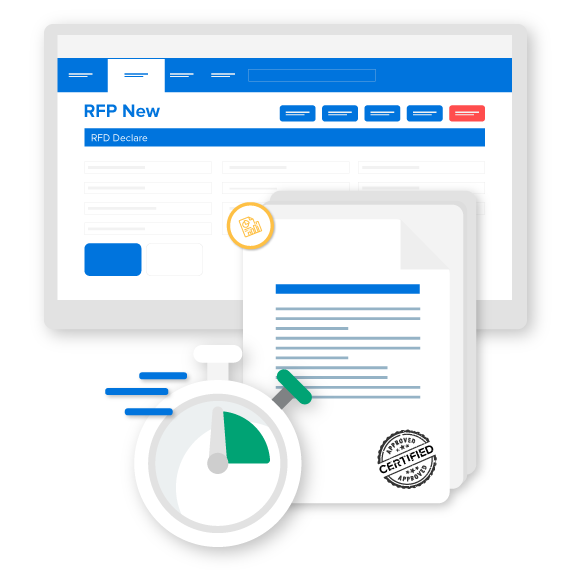
28 Aug
Coming together is a beginning, staying together is progress, and working together is success. ~ Henry Ford.
The international export market involves strict regulatory compliance, intricate trade laws, logistical challenges, and cumbersome documentation. Miss one aspect and the entire process can come to a grinding halt.
It is a tough world out there, and it takes seasoned exporters like you to turn these challenges into opportunities to excel at the exporting game.
Furthermore, Australia stands as a significant player in the global auto parts landscape, but its potential remains largely untapped. The vast resources, advanced manufacturing capabilities, and business-friendly climate make Australia well-positioned to drive forward in this high-stakes race.
But to truly excel and leave an indelible mark on the world stage, you will need more than raw materials and manufacturing prowess. Innovation and technology alone would not suffice – you will also need the wisdom and foresight to win the auto parts export game.
Let us explore how you, an established auto parts exporter, can leverage the power of technology to drive growth and efficiency in the Australian auto parts export market.
Dealing With the Challenges in the Auto Parts Export Industry
Complex Regulatory Environments and the Need for Compliance
- Harmonised System (HS) Codes: Accurate classification of auto parts under HS Codes is a cornerstone of smooth customs clearance. Any misclassification can lead to penalties, shipment delays, or even denial of entry, impacting your delivery timelines and customer relationships.
- Essential Documentation for Compliance: Obtaining an Export Declaration Number (EDN) from Customs and a Certificate of Origin (COO) from the Chamber of Commerce are pivotal in navigating complex regulatory environments. These documents ensure that your auto parts are correctly accounted for and originate from a legitimate source, aiding in customs clearance and avoiding potential penalties.
- Safety and Quality Regulations: Each importing country has its unique set of safety and quality regulations, non-adherence to which can lead to product rejections. As a result, it could harm your reputation and lead to a potential loss of business.
- Environmental Regulations: New regulations around green and hybrid vehicles, such as the EU’s End-of-Life Vehicles (ELV) Directive, necessitate continual adaptation in your product offering and compliance processes.
Logistical Challenges
- Transportation: Selecting the most cost-effective and timely mode of transport is crucial for maintaining your margins and meeting delivery commitments. Any inefficiency here can increase your costs and risk customer dissatisfaction.
- Inventory Management: Inaccurate demand forecasting and inefficient inventory management can lead to overstocking, tying up capital, or understocking, resulting in lost sales and customer dissatisfaction.
Trade Laws
- Trade Agreements: Australia’s Free Trade Agreements (FTAs) come with rules of origin. Not staying updated can mean missing out on tariff benefits, impacting your competitiveness in the global market.
- Anti-Dumping and Countervailing Duties: Countries often impose these duties to protect their domestic industries. Falling foul of these can increase your export costs or even bar your products from certain markets.
Documentation Complexities
- Export Documentation: Even a minor mistake in export documents can lead to customs delays, affecting delivery timelines and potentially incurring demurrage charges.
- Electronic Data Interchange (EDI): EDI mandates from some countries mean you must ensure accurate data transmission in the prescribed format. Any non-compliance can lead to shipment delays or penalties.
- Required Documentation: For seamless exports, you’ll need an Export Declaration Number (EDN) from Customs and a Certificate of Origin (COO) from the Chamber of Commerce. These documents are essential for meeting compliance criteria.
Mapping the Competitive Terrain: Key Players in the Auto Parts Export Industry
Decoding the success of top players in the global auto parts market is like uncovering a blueprint for growth and innovation. These market leaders, with their strategic foresight and disciplined execution, reveal crucial industry trends, effective operational strategies, and customer preference patterns that can be highly informative.
Let’s review the big names:
- Germany: With exports valued at US$56.4 billion in 2016, Germany held the largest market share (15.6%) in auto parts exports. Despite a 4.8% dip in net export surplus since 2012, it remains a market leader.
- United States: With an 11.9% share in auto parts exports ($42.8 billion), the US saw a notable 45.6% increase in net export deficit since 2012.
- Japan: Despite a decrease in net export surplus by 26.8% since 2012, Japan contributed 8.8% ($31.7 billion) to total auto parts exports.
- China: Recording an impressive 319.9% rise in net export surplus since 2012, China contributed 7.9% ($28.4 billion) to global auto parts exports.
- Mexico: Despite a 321.6% decrease in net export surplus since 2012, Mexico maintained a strong presence, with 7.3% ($26.2 billion) of total exports.
Other major contributors include South Korea, France, the Czech Republic, Italy, Poland, Canada, Spain, Thailand, the United Kingdom, and Hungary. Collectively, these countries constituted 82.9% of all auto parts exports by value in 2016.
From this data, experienced exporters can infer key trends. For instance, the fastest-growing auto parts exporters since 2012 include Hungary, Mexico, Poland, and the Czech Republic. Yet, countries like Japan, France, Italy, and the UK witnessed a decline in their exported auto parts sales.
Positioning within the Global Dynamics
By understanding the competitive dynamics of key players, you can anticipate opportunities and strategise better. Japan, for example, had the highest surplus in the international trade of automotive parts, indicating a strong competitive advantage in this specific product category.
In contrast, with its highest deficit, the US pointed towards a competitive disadvantage but also revealed opportunities for auto parts-supplying countries.
The Technological Revolution: Adding Value to Your Export Operations
Incorporating technology into the export industry has not only modernised operational practices but has also led to tangible benefits that enhance your value proposition and profitability as an exporter.
Embracing Digital Transformation
- Digital Platforms: Online platforms and e-marketplaces are a conduit to international buyers, streamlining your sales process and amplifying your reach and visibility in the global market.
- Data Analytics: Harnessing data analytics can provide actionable insights to predict and respond to market trends, understand buyer behaviour, and improve operational performance. These insights can shape your strategy, resulting in improved competitiveness and profitability.
Leveraging Automation
- Robotic Process Automation (RPA): RPA can relieve your team from the tedium of repetitive tasks like data entry, enabling them to focus on strategic initiatives that drive business growth. This automation reduces human error and boosts productivity.
- Predictive Analytics: Machine learning-powered predictive analytics can enhance your inventory management by forecasting demand with high precision. This can minimise overstocking or understocking, improving cash flow and customer satisfaction.
Implementing Artificial Intelligence (AI)
- Supply Chain: AI can fine-tune your logistics by optimising routes in real-time, considering dynamic factors like weather and traffic. This means timely deliveries, lower transportation costs, and happier customers.
- Compliance: Real-time monitoring of changes in international regulations by AI systems ensures your business stays compliant, minimising the risk of fines or shipment delays.
Adopting Blockchain Technology
- Smart Contracts: Blockchain-powered smart contracts can automate and secure your international transactions, reducing the need for intermediaries. This leads to faster, more efficient transactions that boost your cash flow.
- Traceability: Blockchain provides unparalleled transparency and traceability for your auto parts, enhancing trust with international buyers and potentially justifying a price premium.
Utilising Cloud-based Solutions
- Scalability: Cloud solutions can adapt to your business needs, scaling up or down as required. This means you pay only for what you use, optimising your IT costs.
- Accessibility: With cloud-based systems, you can manage your export operations from anywhere, anytime, on any device. Its flexibility ensures your business continues unhindered, even amidst disruptions.
Leveraging the ImpexDocs Edge: Acing the Auto Parts Export Game
At ImpexDocs, we understand the complexities of the auto parts export industry and believe in the transformative power of technology to simplify your export supply chain.
We aim to facilitate growth by providing comprehensive export software solutions backed by an experienced team that understands the export industry landscape.
The ImpexDocs Global Trade Management Suite is a culmination of this philosophy, offering various components that cater to the unique needs of experienced auto parts exporters:
Export Documentation Software
- Precision in Documentation: The software automates document creation, minimising manual input and the associated error margin. This ensures streamlined customs clearances, leading to timely deliveries and upholding your trust with global customers.
- Facilitating Electronic Data Interchange (EDI): The suite supports compliance with EDI mandates, facilitating smooth data transmission in the required format. This feature ensures seamless customs clearance and shields you from potential penalties.
Regulatory Compliance Software
- Adherence to Regulations: Our software stays abreast of international regulatory changes, including safety, quality, and environmental standards, assuring your business remains compliant and avoids any possible product rejections or penalties.
- Assisting with HS Codes: The software aids in accurately classifying auto parts under HS Codes, preventing misclassification-related shipment delays or fines.
- Streamlined Document Management: Obtain your essential Export Declaration Number (EDN) in minutes straight from Australian customs, and submit any type of Certificate of Origin (COO) online to any Chamber of Commerce across Australia.
Shipping Management Software
- Streamlined Shipping: The suite facilitates the selection of cost-effective and efficient sea freight shipping options. This contributes to preserving your margins, meeting delivery commitments, and enhancing customer satisfaction.
- Effective Rate Management: Using rate management, an exporter can identify the best rate option for a voyage.
- Live Container Tracking: Exporters can digitally track containers to the destination port from the container pickup, including updates on the latest ETA forecast at each step of the voyage.
Export Collaboration & Workflow Software
- Approval Workflow Automation: Share the export documentation securely with your buyer for review and fast approval, helping you streamline hours of coordination and a sea of emails from every shipment.
- Self-Serve Shipment Tracking: Let your buyers track containers and shipments on their own by providing them with self-serve capabilities.
Driving Forward: Embracing Technology for Your Export Success
The global auto parts export industry has an intricate array of challenges. However, technology has the potential to transform these hurdles into opportunities for growth.
For seasoned exporters like you, leveraging technology means turning complexity into efficiency, ensuring streamlined operations and improved efficiency.
The ImpexDocs Global Trade Management Suite simplifies your export journey, providing a robust solution tailored to your needs. It combines technology and industry expertise, empowering you to stay ahead of industry changes and optimise logistics.
Try the ImpexDocs Global Trade Management Suite and redefine exports for a future shaped by efficiency and innovation.


